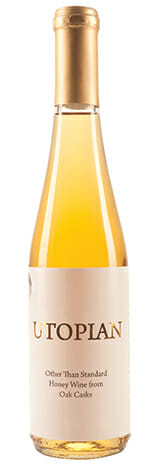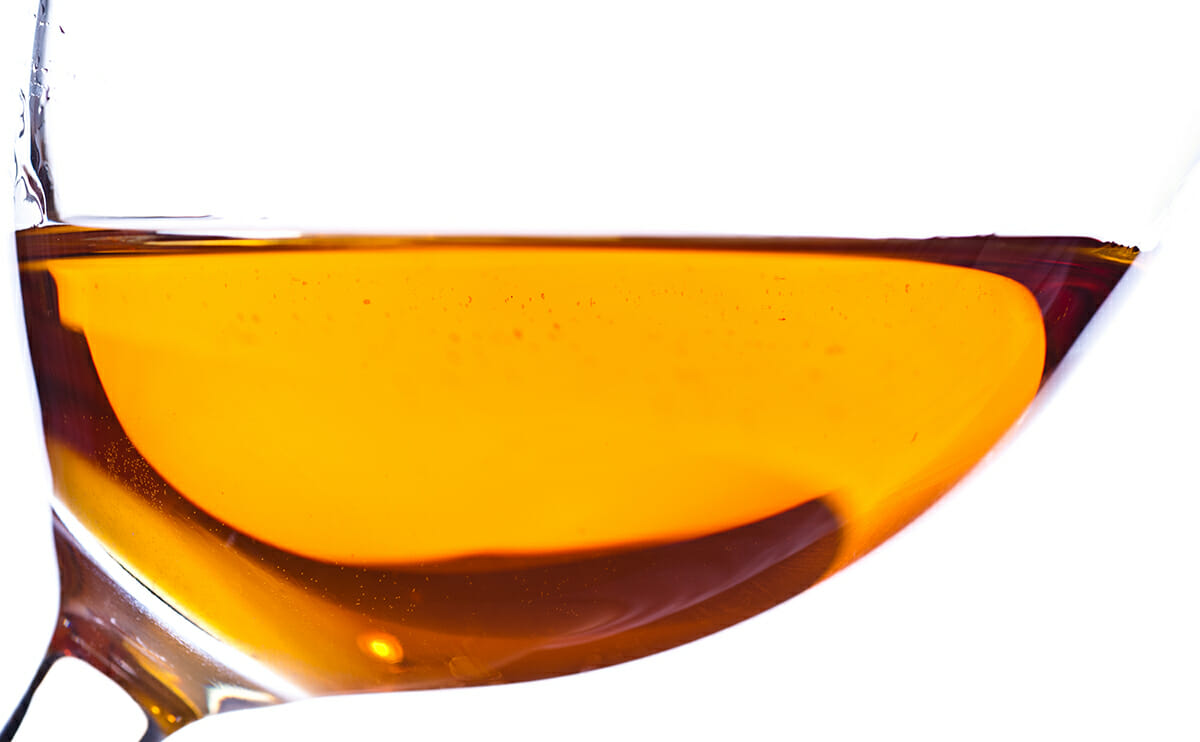The Mead You Need
Get buzzed on honey wine.
This is how the world got mead, according to University of Pennsylvania biomolecular archaeologist Dr. Patrick McGovern. The drink, he believes, predates even the 8,000-year-old cave painting of this honey liquor found near Valencia, Spain. He thinks that the first prehistoric mead was scavenged earlier, too, than the trace elements of honey wine discovered in shards of excavated Chinese pottery dating back to 7,000 B.C.
Often termed “the ancestor of all fermented drinks,” mead is the only fermented beverage that can emerge naturally from our surroundings. When regurgitated nectar from the gut of a bee mixes with water and yeast from the air, the creation of mead will inevitably occur. “Whatever continent you pick,” says McGovern, “if there were beehives, I think they would have all discovered how to make mead.”

Its popularity waned in the last century, but like many craft beverages, mead is making a comeback. Meaderies and mead festivals and competitions are popping up everywhere from the Pacific Northwest to Scandinavia. The best meaderies, according to Portland-based brewer Ari Moss, are Moonlight Meadery in New Hampshire and Dansk MjØd in Denmark.
“We’re growing by leaps and bounds.” says Chris Webber, founder and president of the American Mead Makers Association. “We pick up a lot of the millennials because they want to try new stuff.”
This younger generation is intrigued by the newness of mead as well as its quality and the range of flavors. This, in part, is why the mead industry has grown so much in recent years, says Michael Fairbrother, owner and founder of New Hampshire’s Moonlight Meadery, one of the fastest growing meaderies in the world. “The fact that [the millennials] can be the first to tell their friends about it,” says Fairbrother, “is another huge win for them.” With over 10,000 mead enthusiasts coming through his tasting room just last year alone, the key to success for Fairbrother has been both word-of-mouth marketing as well as simply getting people to taste his product. Like wine, mead can be sparkling or still, dry or sweet, and it has a varying alcohol content depending upon the quantity of honey that is used in its production.
Mead is the only fermented drink that can emerge naturally from our surroundings.
Much of mead’s flavor, however, comes from the honey itself, which presents a unique terrior nuanced by whatever plants the bees choose to pollinate. Buckwheat honey, for instance, is noted for its “barnyard” flavor, while orange blossom honey gives mead lemony notes.
“The range of possible flavor found in honey is endless,” says Geoff Lukas, Chef de Cuisine at Sofra Bakery in Cambridge, Massachusetts. “In having these microbes ingest some of the sugar, I think it brings out more of the complexity,” he says.
Not everyone is so taken with the new meads. Moss, for one, thinks that in the fast-paced world of today, brewers lack the time to experiment with ways to enhance the fermentation process. “My favorite meads,” says Moss, “are the ones where I added all of those things semi-accidentally and semi-part of the recipe.”
And Australian mead enthusiast Jeremy Engle longs to recreate a genuine mead of the past. “These days, they don’t do it right – the way it should be done,” says Engle.
Still, when Engle drinks mead, the words just come pouring out of him. “Other alcohols open you up from different places,” says Engle, “but mead opens you up from the heart. It brings people together.”
Follow us

This work is licensed under a Creative Commons Attribution-NoDerivatives 4.0 International License.
Want to republish a Modern Farmer story?
We are happy for Modern Farmer stories to be shared, and encourage you to republish our articles for your audience. When doing so, we ask that you follow these guidelines:
Please credit us and our writers
For the author byline, please use “Author Name, Modern Farmer.” At the top of our stories, if on the web, please include this text and link: “This story was originally published by Modern Farmer.”
Please make sure to include a link back to either our home page or the article URL.
At the bottom of the story, please include the following text:
“Modern Farmer is a nonprofit initiative dedicated to raising awareness and catalyzing action at the intersection of food, agriculture, and society. Read more at <link>Modern Farmer</link>.”
Use our widget
We’d like to be able to track our stories, so we ask that if you republish our content, you do so using our widget (located on the left hand side of the article). The HTML code has a built-in tracker that tells us the data and domain where the story was published, as well as view counts.
Check the image requirements
It’s your responsibility to confirm you're licensed to republish images in our articles. Some images, such as those from commercial providers, don't allow their images to be republished without permission or payment. Copyright terms are generally listed in the image caption and attribution. You are welcome to omit our images or substitute with your own. Charts and interactive graphics follow the same rules.
Don’t change too much. Or, ask us first.
Articles must be republished in their entirety. It’s okay to change references to time (“today” to “yesterday”) or location (“Iowa City, IA” to “here”). But please keep everything else the same.
If you feel strongly that a more material edit needs to be made, get in touch with us at [email protected]. We’re happy to discuss it with the original author, but we must have prior approval for changes before publication.
Special cases
Extracts. You may run the first few lines or paragraphs of the article and then say: “Read the full article at Modern Farmer” with a link back to the original article.
Quotes. You may quote authors provided you include a link back to the article URL.
Translations. These require writer approval. To inquire about translation of a Modern Farmer article, contact us at [email protected]
Signed consent / copyright release forms. These are not required, provided you are following these guidelines.
Print. Articles can be republished in print under these same rules, with the exception that you do not need to include the links.
Tag us
When sharing the story on social media, please tag us using the following: - Twitter (@ModFarm) - Facebook (@ModernFarmerMedia) - Instagram (@modfarm)
Use our content respectfully
Modern Farmer is a nonprofit and as such we share our content for free and in good faith in order to reach new audiences. Respectfully,
No selling ads against our stories. It’s okay to put our stories on pages with ads.
Don’t republish our material wholesale, or automatically; you need to select stories to be republished individually.
You have no rights to sell, license, syndicate, or otherwise represent yourself as the authorized owner of our material to any third parties. This means that you cannot actively publish or submit our work for syndication to third party platforms or apps like Apple News or Google News. We understand that publishers cannot fully control when certain third parties automatically summarize or crawl content from publishers’ own sites.
Keep in touch
We want to hear from you if you love Modern Farmer content, have a collaboration idea, or anything else to share. As a nonprofit outlet, we work in service of our community and are always open to comments, feedback, and ideas. Contact us at [email protected].by Rebecca Katzman, Modern Farmer
September 30, 2014
Modern Farmer Weekly
Solutions Hub
Innovations, ideas and inspiration. Actionable solutions for a resilient food system.
ExploreExplore other topics
Share With Us
We want to hear from Modern Farmer readers who have thoughtful commentary, actionable solutions, or helpful ideas to share.
SubmitNecessary cookies are absolutely essential for the website to function properly. This category only includes cookies that ensures basic functionalities and security features of the website. These cookies do not store any personal information.
Any cookies that may not be particularly necessary for the website to function and are used specifically to collect user personal data via analytics, ads, other embedded contents are termed as non-necessary cookies.
